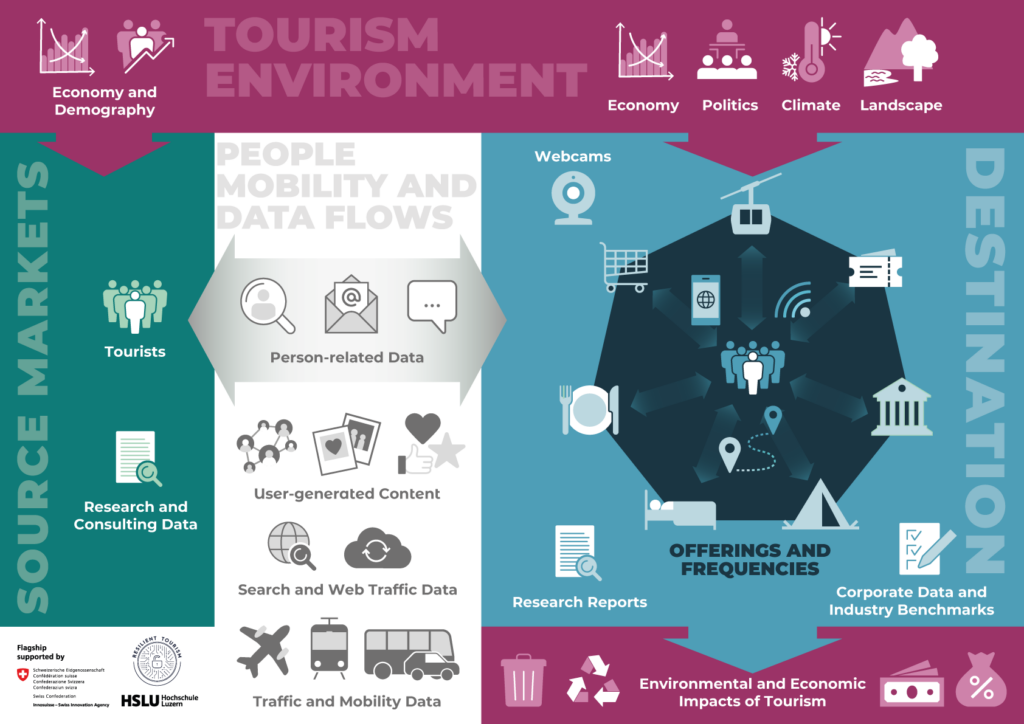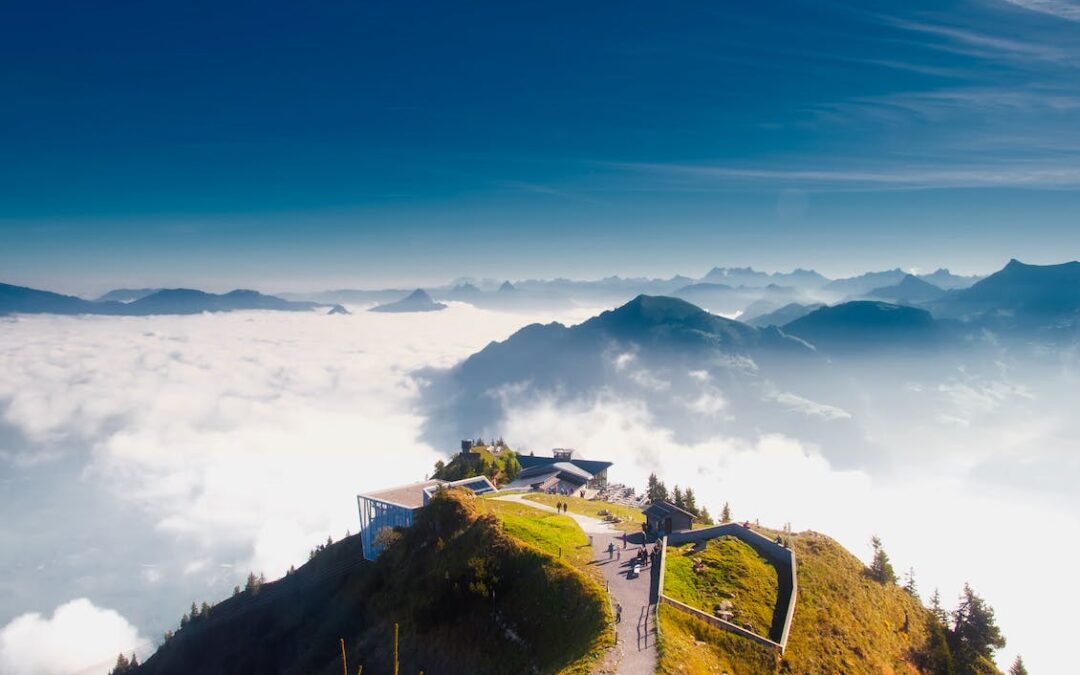With this website and our metadata catalogue we proved that in tourism there is plenty of data available. We tried to categorize the data and divide them into categories. Moreover, our goal was to create a tourism data landscape – big picture that illustrates and explains data in tourism, its multitude, the sources of the data and their interdependence. Below you can check the Swiss tourism data landscape in form of visual that we created. We believe that a picture is worth a thousand words. Nevertheless. a short explanation is needed to fully understand how to read and interpret the below picture.
Figure 1 – Tourism Data Landscape – overview of data sources in tourism

Tourism environment
The tourism environment (purple in tourism data lanscape) of the source market is influenced by demographic and economic trends, but also by factors such as the holiday calendar. Demography, purchasing power parity, or current economic stability influence travel descisions, and holiday calendar sets specific time periods when people travel more often. Corresponding data is often openly accessible and distributed in the systems of the source markets. The tourism environment of the destination can be recorded using data on economic development, the political environment (visa and entry regulations) and climate or landscape-related map data.
Source markets
Source market data (green in tourism data landscape) focuses on tourists. It documents, for example, their characteristics, needs and intensity of travel. This data is primarily found in source market research reports and analyses.
People mobility and data flows
Further data is generated between the place of residence (source market) and the destination and is referred to as people mobility and data flows (white in the data landscape). This includes mobility frequencies and personal data from communication between the destination and tourists. User-generated content: ratings and reviews generated by tourists and their posts about the trip (e-WOM), as well as search and web traffic data resulting from travel preparation or offer research during the trip, can be found on the internet regardless of the source market and destination.
Destination
The most extensive section is data generated in the destinations (blue part in the tourism data landscape). This includes offering data on local transport, accommodation, attractions and catering . Providers record frequency data and in some cases frequencies are also measured anonymously in public spaces. Purchases and bookings with tourism providers generate transaction data (marked with arrows). Map-based data such as points of interest (POI) or routes are essential for visitor guidance and measurement. Much of the data available in the destination is protected or confidential. Agreements can be made in data co-operations that allow, for example, the exchange of key figures for benchmarking purposes . In the course of sustainability, data on the environmental and economic impacts on tourism (e.g. energy consumption, waste) becomes more important.
